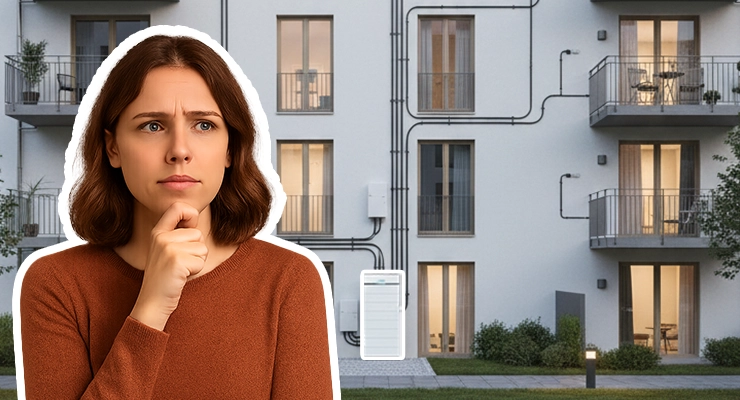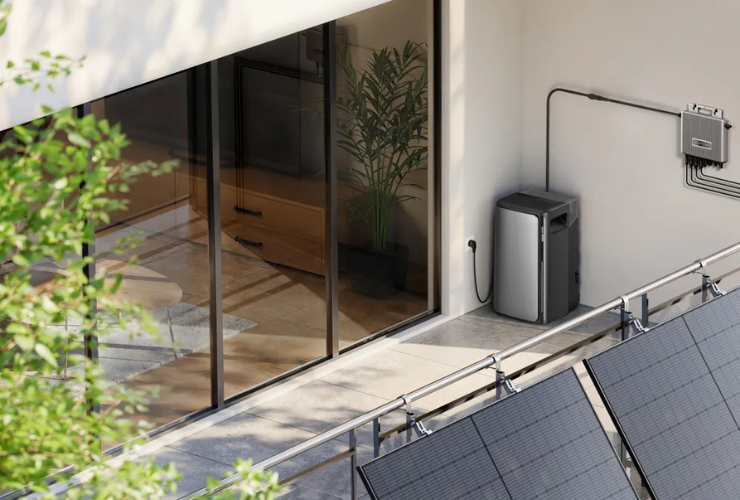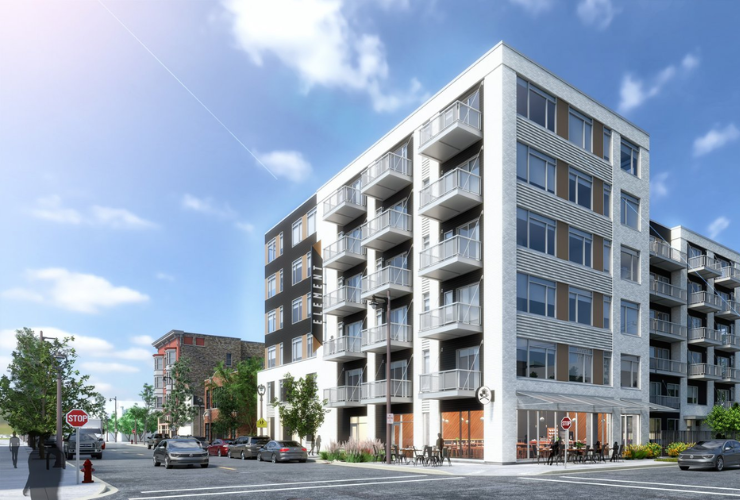Fast read
Yes, battery systems are increasingly being integrated into Australian strata and shared solar schemes. This approach allows apartment residents to store excess solar power for later use, increasing energy self-sufficiency and reducing bills. The primary models involve either a single, large shared battery or individual batteries for each unit, often facilitated by technologies that ensure fair energy distribution. While complex, involving technical, financial, and regulatory hurdles, government incentives and supportive legislative changes are making these projects more accessible.
Can battery systems be integrated into strata-title or shared solar schemes?
For a long time, residents in apartments and other strata-title properties have been locked out of the solar revolution enjoyed by standalone homeowners. However, this is rapidly changing. Adding a battery to a shared solar installation unlocks significant new benefits for everyone in the building.
The primary advantage is dramatically increased self-consumption of the solar energy generated on your rooftop. Instead of exporting surplus solar power to the grid for a modest feed-in tariff, a shared battery stores that energy for the building to use during the evening or on overcast days when electricity from the grid is most expensive. This reduces the entire building’s reliance on the grid and can lead to substantial savings on power bills for all residents. While savings are highly variable based on system size, building consumption patterns, and local electricity tariffs, the financial benefits are a key driver for adoption.
Furthermore, a shared battery system enhances energy resilience, providing a backup power source during blackouts, which is a major benefit for maintaining essential services like lifts and corridor lighting.
How does it work in a strata building?
Integrating battery storage into a strata scheme is more complex than a standard residential installation, but several established models make it achievable. The core challenge lies in how to manage and fairly distribute the stored energy among multiple residences and common areas.
Here are the main approaches:
- A single, shared community battery: This is the most common and often most efficient approach. A large battery is installed and connected to the building’s shared solar system. The stored energy can then be used to power common areas (like lighting and lifts) first, with the remainder distributed among participating apartments. This model benefits from economies of scale, as one large battery is typically more cost-effective than many small ones.
- Individual batteries for each apartment: In this setup, each interested apartment installs its own smaller battery. This is often paired with a system where each unit also has its own allocated solar panels on the shared roof. This gives individual owners more control, but can be more expensive and complex to manage in terms of roof space allocation and wiring.
- Embedded networks and microgrids: Some buildings operate as a private “embedded network” or “microgrid,” with a master meter connecting to the grid and individual sub-meters for each apartment. In this scenario, a solar and battery system can be managed centrally, with the benefits shared among residents through lower electricity rates.
Specialised technology is crucial for success. For instance, solar sharing technology like Allume’s SolShare can intelligently distribute power from a communal solar and battery system to different apartments based on real-time demand, ensuring the distribution is equitable. When considering inverter technology for these complex roof environments, which may have shading, various hybrid inverters are available that are well-suited for managing both solar generation and battery storage efficiently.
What are the main challenges to overcome?
While the benefits are clear, owners’ corporations face several hurdles.
- Fairness and equity: The biggest challenge is ensuring that the costs and benefits are shared fairly among all residents. This requires a clear and transparent agreement covering who pays for the system and how the energy savings are allocated.
- Regulatory and technical complexity: Navigating the approvals process with the local network service provider and ensuring the technical design is sound requires expert guidance. Additional costs can arise from crane hire for tall buildings or complex electrical work.
- Getting agreement: In Australia, making alterations to common property like a rooftop requires a resolution from the owners’ corporation. In New South Wales, the voting threshold to approve sustainability infrastructure was lowered to an ordinary resolution (a simple majority of votes cast) in 2021. Further reforms taking effect from 1 July 2025 will prohibit by-laws from preventing these upgrades based on appearance alone (unless the property is heritage listed) and will require sustainability to be considered at every AGM.
- Upfront cost: The initial investment for a commercial-scale battery system can be significant. However, a growing number of government incentives are available to help offset this.
Are there government rebates to help?
Yes, federal and state governments are actively encouraging these projects.
- Federal Cheaper Home Batteries Program: Starting from 1 July 2025, this program will provide an upfront discount of around 30% on the cost of installing an eligible battery system. The support will be delivered by expanding the Small-scale Renewable Energy Scheme (SRES) to include batteries, which will generate Small-scale Technology Certificates (STCs). While the scheme is primarily designed for individual premises, apartment residents may be eligible if they have individual metering and solar access. It is not currently structured as a bulk rebate for a single large battery for an entire building, though advocacy groups are campaigning for broader inclusion of shared systems.
- State-based grants: Several states have specific programs. For example, the NSW Solar for Apartment Residents (SoAR) grant offers co-funding of up to 50% of the project cost (capped at $150,000) for shared solar systems. The ACT’s Solar for Apartments Program provides up to $100,000 per complex, structured as 50% grant funding and 50% as a zero-interest loan.
These incentives can dramatically improve the business case, often reducing the payback period to under 10 years, which is a common requirement for grant eligibility.
What about safety?
Safety is a paramount concern, particularly regarding fire risk with lithium-ion batteries. Any installation must adhere to strict Australian standards. It’s crucial that the owners’ corporation ensures:
- The system is designed and installed by a professional accredited by Solar Accreditation Australia (SAA). SAA became the sole accreditation body under the Small-scale Renewable Energy Scheme, with the full transition from the Clean Energy Council completed on 29 May 2024.
- All components, including the battery, are from reputable suppliers and meet Australian standards, such as being on the Clean Energy Council’s (CEC) approved product list.
- Adequate safety measures, such as proper ventilation and fire protection, are in place.
- The building’s insurance provider is notified, and the policy is updated to cover the new infrastructure.
Getting your strata ready for a shared battery
Successfully implementing a shared battery system is a journey that requires careful planning and communication. The key first step is to form a subcommittee of interested residents to champion the project. This group can research options, engage with solar consultants for a feasibility study, and educate other residents about the benefits.
By presenting a clear, well-researched proposal that outlines the costs, savings, and technical plan, you can build the consensus needed to get your project approved. With falling technology costs and strong government support, shared solar and battery systems are empowering strata communities across Australia to take control of their energy future.





